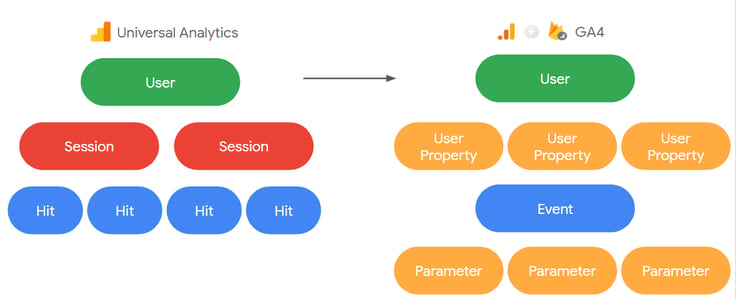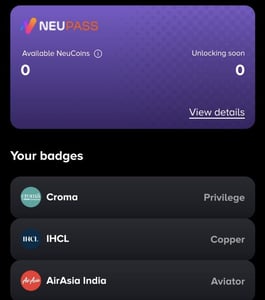Every decision taken by publishers is influenced in some way or the other by numbers such as user acquisition, content reach, average session duration, and the number of pages per session among others. The digital news, media, and content industry is the top priority for iZooto. So it’s only natural that I spend a considerable amount of time tracking the industry very closely.
Over the past three years, I’ve seen the digital news media industry adapt to the changing environment with resilience. The approach of news publishers during this time is commendable. Their dependence on platforms such as Facebook and Google also opens them up to several new challenges for audience development.
First, the industry defines success by how publishers maintain forward-looking growth by pushing clicks, users, and site visits. At some point, publishers will be forced to alter their approach. This change might be a reality sooner than we expect.
Incorporating data models and analytics
It’s surprising that very few publishers have deep-level awareness and information about their users. In fact, it's common for newsrooms to devise their editorial strategy with analytics and dashboards that only project anonymous user behavior and trends.
These data sets convey how a bunch of random users clicked on a story, and offer details on their source such as Google News or Google Search, or a social network such as Facebook. There's an opportunity for publishers to learn from sectors such as e-commerce - where the marketing funnel tracks the user journey end-to-end.
Adopting the RFM model
This RFM model puts emphasis on user events online and stands for Recency, Frequency, and Monetary Value. The user journey is tracked through each stage and a monetary value is assigned to each user based on their browsing pattern such as adding a product to an online cart or subscribing to a paid newsletter.
Recency factors in the latest visit by a user, while frequency denotes how often the user conducts events on the website. The last parameter - monetary value - tries to assign a value to the event. The next step is usually to create a relevant segment of users on the basis of these parameters.
Also Read: Monetization Challenges That Are Hurting Publisher Revenues in 2022
The RFM model lets you find out your most valued users. This helps you drive revenue-focused goals such as increasing lifetime value and encouraging membership sign-ups.
E-commerce businesses have set the benchmark when it comes to understanding users and looking at browsing patterns to optimize their performance marketing strategy. Other industries such as banking or lead generation businesses have followed the footsteps of e-commerce and have tasted success.
Unfortunately, I am yet to come across a publisher that uses recency and frequency of content consumption to create relevant user segments. Or for that matter, even going beyond website visits.
Focus on active users
Google Analytics (GA) is one of the most extensively used tools for analytics by businesses of all kinds. Editors and marketers in the publishing industry are overwhelmingly dependent on GA for all types of data needs.
Google has recently announced its plans to introduce GA4 and phase out UA. If you look at the structural differences between the two, you will discover that everything in GA4 is built around Users and Events.
GA4 would also focus on ‘Active Users’ rather than an aggregate ‘Total Users’ as active users are the ones who are going to contribute significantly. Every hit would be an event defined by parameters related to that event, moving away from the Category, Action, and Label fields in UA.

Image source: Cardinalpath
Reward loyal users
The Tata Group is a large Indian conglomerate with offerings that span multiple industries. Recently, the Group introduced NeuPass, a single window rewards program the Group offers customers across all its businesses to enjoy one consistent rewards program. Currently, ten Tata Group companies are part of this program with several more to join the list soon.
This program creates a coherent view of users by analyzing activities across different products and services - that includes travel, electronics, food, retail, and healthcare - to profile users better by consolidating information from these sources.
Besides offering value to customers, the rewards program will eventually help generate more revenue from the sale of products and services due to increased lifetime value and loyalty. I am pretty sure that a CDP solution at the backend powers all of this.
 Image: Tata NeuPass
Image: Tata NeuPass
The limitations within existing solutions
Currently, tools and solutions that offer insights into user data can be classified into three broad segments. Tools such as Google Analytics, Chartbeat, and Mixpanel are primarily used by marketers for all their data needs. Right from attributing performance across channels and campaigns to analyzing user behavior, analytics dashboards offer valuable insight.
These tools usually act as a dumping ground of data that is anonymous, which makes it almost impossible to have any marketing campaign that targets specific users.
Also, the data here is mostly anonymous and in aggregate form. It becomes challenging to go deeper to find any meaningful insights.
Data management platforms
Currently, data management platforms (DMPs) enable brands to advertise to the masses on the internet. This is possible by anonymous cookies and other identifiers such as device ID and IP addresses. Customer Data Platforms (CDPs) on the other hand work with a mix of anonymous as well as identifiable users by leaning on personally identifiable information that has been shared with them. This includes name, email address, phone number, and any additional fields that may have been available from prior communication with the user.
Given its emphasis on reach and impact, DMPs prefer recent activities with a relatively short attention span. Since users are anonymous on DMPs, it is impossible for brands to interpret the historical preference of their users using such platforms.
Also Read: Top 15 Video Ad Networks for Publishers For 2022
Customer relationship management software
CRM solutions have existed for several years. However, given the very nature of this segment, existing paying customers are the priority. Visitors to your business website get ignored. This problem gave rise to online reputation management (ORM) tools to track user conversations around brands.
CRM tools help analyze sales pipelines and forecast performance. They still miss out on customer lifetime data and the user journey. Lastly, it is an intensive process with the need for manual intervention to enrich data and keep them updated.
It’s time for publishers to unlock their potential
There’s a popular quote by a 20th-century engineer named William Deming, “In God we trust, all others must bring data.” As the advertising ecosystem continues to face environmental uncertainties, this quote does strike a chord. There are two ways to overcome growth challenges. Trust in divine events to fix them, or as Deming says, bring data to the table. In my view, that’s the strongest case for a customer data platform.
If data and analytics were the highlights of the last decade, CDPs can very well own the next decade. I wouldn’t be surprised if a lot of the publishers reading this think for a moment that this task isn’t a priority. That they have several years before it becomes a part of their sprint of tasks. I say this based on the numerous conversations with product managers at some of the leading publications out there.
The priority is always showing better results (read pageviews) this week, and this month. And this quarter. What very few have realized is that the industry’s evolution during the pandemic offers an opportunity course correct for the future.
Irrespective of whether publications decide to go the customer data platform route, the following questions will matter to every publisher in the future:
- Do you know every detail about your user?
- Are you serving them in the way they prefer?
- Do you take an objective data-driven approach to serve the content they are interested in?
- Do you offer a personalized experience to your users?
If publishers search for answers to these questions, they will be able to overcome most of the challenges they face currently





